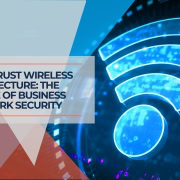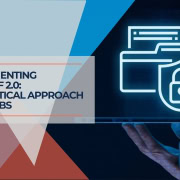Business Email Compromise (BEC) – A Cybersecurity Threat You Should Know About
Last Updated on November 19, 2021
The most common attacks against business emails are phishing and ransomware. Essentially, a business email compromise (BEC) is when an attacker impersonates the actual owner of the account to steal money or sensitive information from the company.
A (BEC) attack can cause thousands of dollars in damage to a business and take a lot of time and resources to recover.
Cybercriminals are not only trying to get money but also confidential data.
Table of Contents
Real-Life Examples of BEC
An example of a BEC attack is an email that appears to come from one of the company's long-time employees, typically the CEO or CFO, requesting a wire transfer to a specific account. The email is usually well written, sometimes including dates, additional contact information, and contact numbers. In addition, they typically use hacked employee email accounts or email addresses that look similar to official company email.
Although they are primarily looking to make money from the company, some try to gain access to confidential information, for example, by accessing a customer database or business development data.
These are the three most common techniques used by cybercriminals in a business email compromise-type attack:
-
A deceptive letter from management.
In this case, the employee is receiving a misleading letter from a more senior colleague. Attackers may use this to trick the employee into sharing information with company leaders but provide a fake email address to steal confidential company data.
-
Faking payroll request from the financial department
In this scenario, the accounting department will receive an employee requesting a change to their payroll credentials. If the accounting staff member modifies card details in the payroll system, the attacker will receive the employee's salary.
-
Fake invoice or bill
This email also tries to fool accounting by making it look like a legitimate invoice or a late payment notice. If the accounting employee falls for this trick, the money is once again going to the cybercriminals.
These attacks are possible because cybercriminals can easily find the names, job titles, work addresses, and employees' contact lists in public databases. After which, they usually use various social engineering techniques to gain the victim's trust and carry out their fraudulent operations.
How can you protect against BEC?
Companies can minimize BEC attacks by undertaking the following measures:
- It is essential to use reliable email security solutions with advanced technologies to protect against phishing and spam.
- Businesses should educate employees on phishing: BEC attacks are less about technical details and more about getting employees to act before it's too late. Using phishing simulation software, anti-phishing training, and on-demand security awareness training can help avert BEC attempts on employees.
- Businesses need to have proper segmentation within their organization, which will prevent unauthorized persons from accessing sensitive information. Typically, the employees involved with the financial side of the business have much greater access to information, so it's crucial to build safeguards and limit access.
- Email account security
Strong passwords and multi-factor authentication are a must for securing your email accounts and personal data. One of the most effective protection methods is a combination of a strong password and a second form of authentication, which adds an extra layer of security.
Unfortunately, there is no end in sight to business email fraud. Research shows that it is becoming an increasingly significant threat to organizations. Therefore, your business may be targeted at some point. Be vigilant and on the lookout for possible BEC attacks that could penetrate our organization's security.
Let us know if you have any questions or would like to schedule a free IT Security consultation.











Leave a Reply
Want to join the discussion?Feel free to contribute!